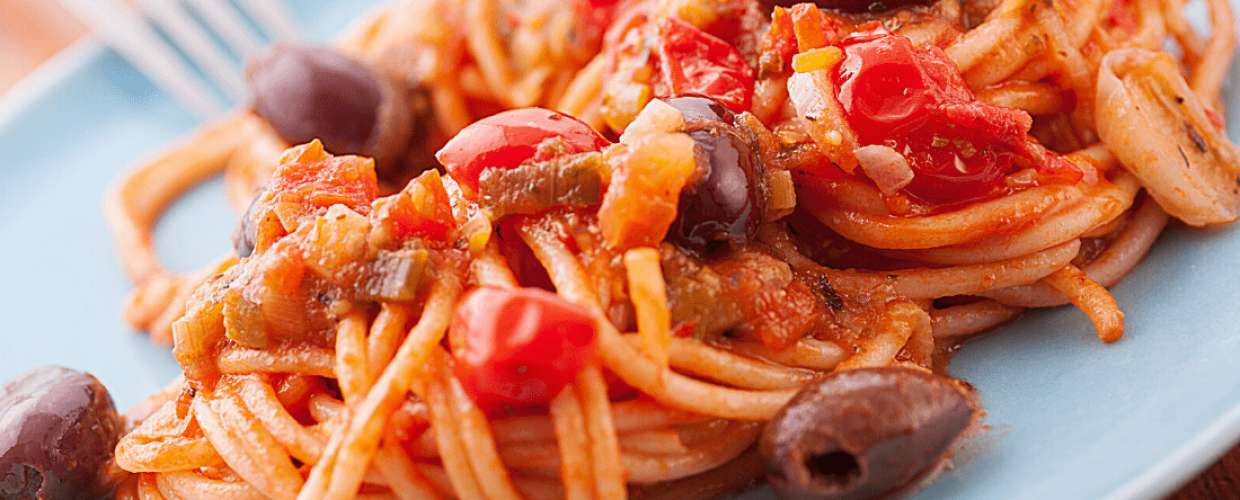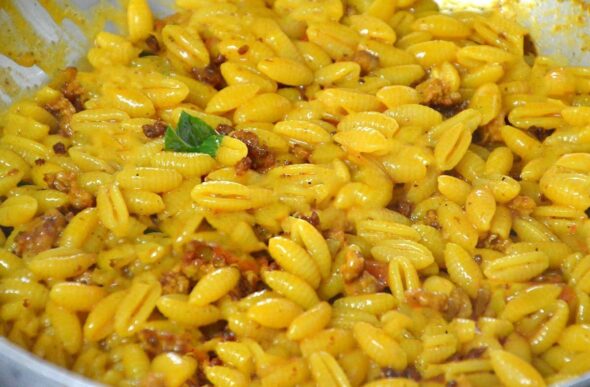
Brandacujun, a Ligurian dish, a close relative of the Provençal brandade but based on stockfish and not cod. The name comes from one phase of the preparation, in fact, the name is compound by “brandato”, which means “shaken vigorously” until the mixture is well mixed – and cujun that in vulgar Italian means ‘testicle’.
A note, in particular, goes also to “Formaggio Ubriaco”, literally “drunken cheese”. This particular cheese is bathed for a minimum of 6 months in wine. During this process the cheese soaks up the liquid and then, when ready, it releases the flavour of the wine it has been soaked in during the ageing time. (Find it here or here).
Another strange and funny name is that of a cheese you can find in Veneto region, the “Bastardo del Grappa” (Bastard of Grappa) which is so-called because it is a cross between various cheeses and therefore it has not a unique identity.
Strozzapreti (“priest-choker” or “priest-strangler”), one of the most famous and widespread pasta shapes in Italy from Emilia Romagna region. They owe their name to the dry and decisive movement with which the azdora, the woman who presides over housekeeping and cook, twisted the pasta to obtain the traditional shape, and which could even strangle a priest.
In Rome, pinzimonio is called “Cazzimperio” (where “cazzi” it’s a dirty word in the Italian language), and it’s a sauce prepared with simple ingredients, in which you can dip raw vegetables. Apparently, the name comes from the “cazza”, an ancient Roman utensil.
If you go to Naples you will happen to eat the “peasant bread”, a term used to indicate in a derogatory way the country people and, consequently, to identify this plebeian bread, whose origins actually seem distinctly urban.
We finish with one of the best pasta of our tradition:
spaghetti
alla Puttanesca,(whore is puttana in Italian, hence “puttanesca”) of Campania origin.
Tomato sauce
,
oil
, garlic, capers (or
anchovies
), oregano and
black olives
from Gaeta that create an exceptional condiment. Truly delicious but so simple to make. There are several theories on the origin of their name: for some they were invented the manager of a Rendez-vous house in the Napolitan Spanish Quarters, according to others they were inspired by the colours of the ladies’ underwear. There is also the idea that the dish, and its name, were born in Ischia, in the 1950s, thanks to the restaurateur Sandro Petri del Rancio Fellone: a group of hungry customers asked the owner to cook “una puttanata qualsiasi,” that meant to cook with whatever ingredients he had. So the owner did, cooking pasta with a simple tomato sauce, some olives and capers. And that was the famous puttanesca sauce, now famous all over the world.









